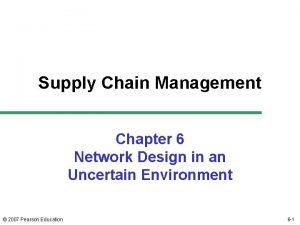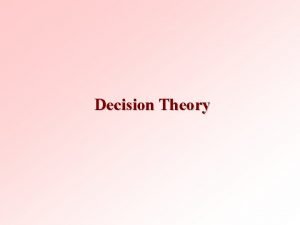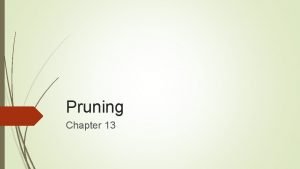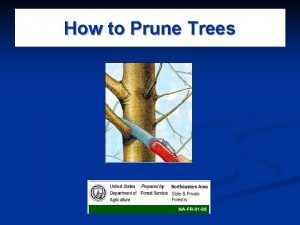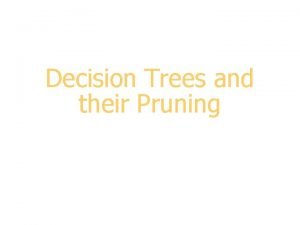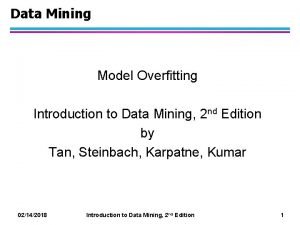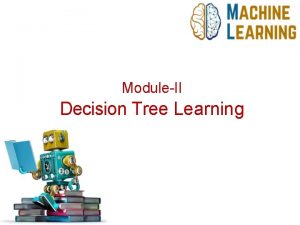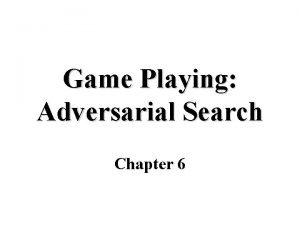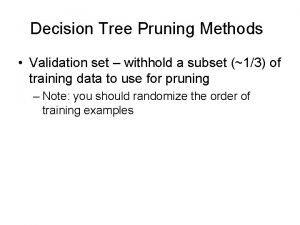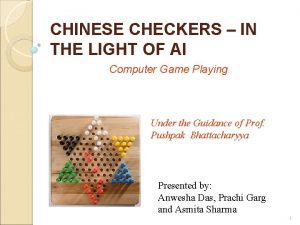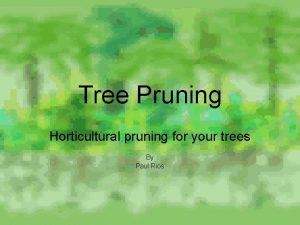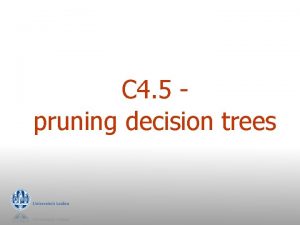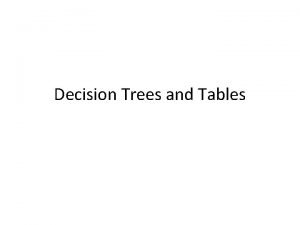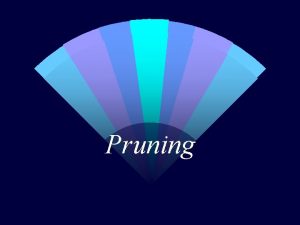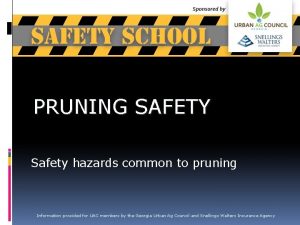C 4 5 pruning decision trees Quiz 1

















- Slides: 17

C 4. 5 pruning decision trees

Quiz 1 Q: Is a tree with only pure leafs always the best classifier you can have? A: No. This tree is the best classifier on the training set, but possibly not on new and unseen data. Because of overfitting, the tree may not generalize very well.


Pruning § Goal: Prevent overfitting to noise in the data § Two strategies for “pruning” the decision tree: § Postpruning - take a fully-grown decision tree § Prepruning - stop growing a branch when and discard unreliable parts information becomes unreliable

Prepruning § Based on statistical significance test § Stop growing the tree when there is no statistically significant association between any attribute and the class at a particular node § Most popular test: chi-squared test § ID 3 used chi-squared test in addition to information gain § Only statistically significant attributes were allowed to be selected by information gain procedure

Early stopping a b class 1 0 0 0 2 0 1 1 3 1 0 1 4 1 1 0 § Pre-pruning may stop the growth process prematurely: early stopping § Classic example: XOR/Parity-problem § No individual attribute exhibits any significant association to the class § Structure is only visible in fully expanded tree § Pre-pruning won’t expand the root node § But: XOR-type problems rare in practice § And: pre-pruning faster than post-pruning

Post-pruning § First, build full tree § Then, prune it § Fully-grown tree shows all attribute interactions § Problem: some subtrees might be due to chance effects § Two pruning operations: 1. Subtree replacement 2. Subtree raising

Subtree replacement § Bottom-up § Consider replacing a tree only after considering all its subtrees

*Subtree raising § Delete node § Redistribute instances § Slower than subtree replacement (Worthwhile? ) X

Estimating error rates § Prune only if it reduces the estimated error § Error on the training data is NOT a useful estimator § Use hold-out set for pruning (“reduced-error pruning”) § C 4. 5’s method Q: Why would it result in very little pruning? § Derive confidence interval from training data § Use a heuristic limit, derived from this, for pruning § Standard Bernoulli-process-based method § Shaky statistical assumptions (based on training data)

Estimating Error Rates Q: what is the error rate on the training set? A: 0. 33 (2 out of 6) Q: will the error on the test set be bigger, smaller or equal? A: bigger

*Mean and variance § Mean and variance for a Bernoulli trial: p, p (1–p) § Expected success rate f=S/N § Mean and variance for f : p, p (1–p)/N § For large enough N, f follows a Normal distribution § c% confidence interval [–z X z] for random variable with 0 mean is given by: § With a symmetric distribution:

*Confidence limits § Confidence limits for the normal distribution with 0 mean and a variance of 1: – 1 0 1 1. 65 Pr[X z] z 0. 1% 3. 09 0. 5% 2. 58 1% 2. 33 5% 1. 65 10% 1. 28 20% 0. 84 25% 0. 69 40% 0. 25 § Thus: § To use this we have to reduce our random variable f to have 0 mean and unit variance

*Transforming f § Transformed value for f : (i. e. subtract the mean and divide by the standard deviation) § Resulting equation: § Solving for p:

C 4. 5’s method § Error estimate for subtree is weighted sum of error estimates for all its leaves § Error estimate for a node (upper bound): § If c = 25% then z = 0. 69 (from normal distribution) § f is the error on the training data § N is the number of instances covered by the leaf

Example f = 5/14 e = 0. 46 e < 0. 51 so prune! f=0. 33 e=0. 47 f=0. 5 e=0. 72 f=0. 33 e=0. 47 Combined using ratios 6: 2: 6 gives 0. 51

Summary § Decision Trees § splits – binary, multi-way § split criteria – information gain, gain ratio, … § missing value treatment § pruning § No method is always superior – experiment!
 Objectives of decision making
Objectives of decision making Slidetodoc.com
Slidetodoc.com Decision tree supply chain
Decision tree supply chain Laplace criterion example
Laplace criterion example Four-model approach
Four-model approach The bean trees quiz
The bean trees quiz Neural network ib psychology
Neural network ib psychology Cane pruning
Cane pruning Cost complexity pruning
Cost complexity pruning Objective of trimming
Objective of trimming Cart pruning
Cart pruning Overfitting and pruning in data mining
Overfitting and pruning in data mining Apriori pruning principle
Apriori pruning principle Reduced error
Reduced error God is pruning me
God is pruning me Image search
Image search Pessimistic error pruning
Pessimistic error pruning Checkers minimax
Checkers minimax


